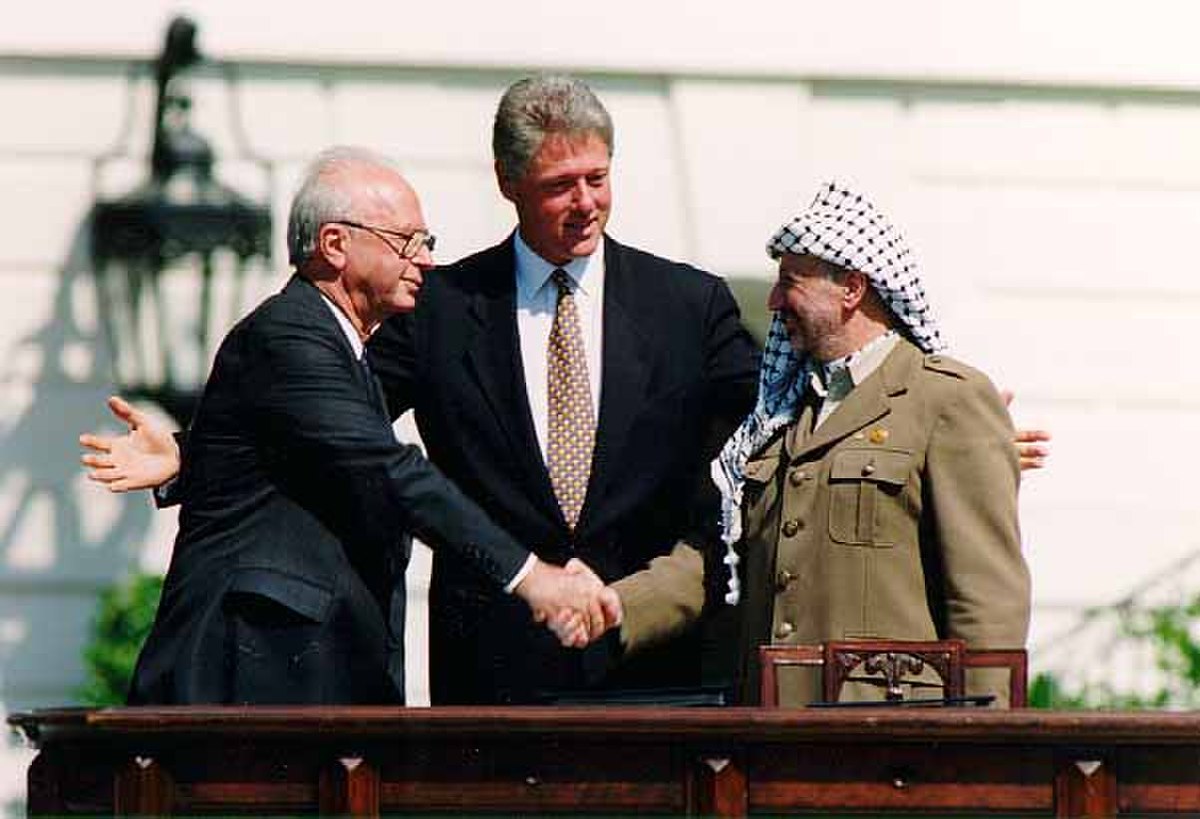
1990s Israel
IsraelIn August 1990, Iraq's invasion of Kuwait led to the Gulf War, involving Iraq and a United States-led coalition. During this conflict, Iraq launched 39 Scud missiles at Israel. At the request of the U.S., Israel did not retaliate, to prevent Arab nations from leaving the coalition. Israel provided gas masks to both Palestinians and its citizens and received Patriot missile defense support from the Netherlands and the U.S. In May 1991, 15,000 Beta Israel (Ethiopian Jews) were secretly airlifted to Israel in a 36-hour period. The coalition's victory in the Gulf War spurred new opportunities for peace in the region, leading to the Madrid Conference in October 1991, convened by U.S. President George H. W. Bush and Soviet Premier Mikhail Gorbachev. Israeli Prime Minister Yitzhak Shamir participated in the conference in exchange for loan guarantees to support immigrant absorption from the Soviet Union, which ultimately led to the collapse of his coalition. Following this, the Soviet Union allowed free emigration of Soviet Jews to Israel, leading to the migration of about one million Soviet citizens to Israel over the next few years.[232]
In Israel's 1992 elections, the Labour Party, led by Yitzhak Rabin, won 44 seats. Rabin, promoted as a "tough general," pledged not to deal with the PLO. However, on 13 September 1993, the Oslo Accords were signed by Israel and the PLO at the White House.[233] These accords aimed to transfer authority from Israel to an interim Palestinian Authority, leading to a final treaty and mutual recognition. In February 1994, Baruch Goldstein, a follower of the Kach party, committed the Cave of the Patriarchs massacre in Hebron. Following this, Israel and the PLO signed agreements in 1994 to begin transferring authority to the Palestinians. Additionally, Jordan and Israel signed the Washington Declaration and the Israel–Jordan Treaty of Peace in 1994, formally ending their state of war.
The Israeli–Palestinian Interim Agreement was signed on 28 September 1995, granting autonomy to Palestinians and allowing the PLO leadership to relocate to the occupied territories. In return, the Palestinians promised to abstain from terrorism and amended their National Covenant. This agreement faced opposition from Hamas and other factions, which carried out suicide attacks against Israel. Rabin responded by constructing the Gaza–Israel barrier around Gaza and importing laborers due to a labor shortage in Israel. On 4 November 1995, Rabin was assassinated by a far-right-wing religious Zionist. His successor, Shimon Peres, called early elections in February 1996. In April 1996, Israel launched an operation in southern Lebanon in response to Hezbollah's rocket attacks.
